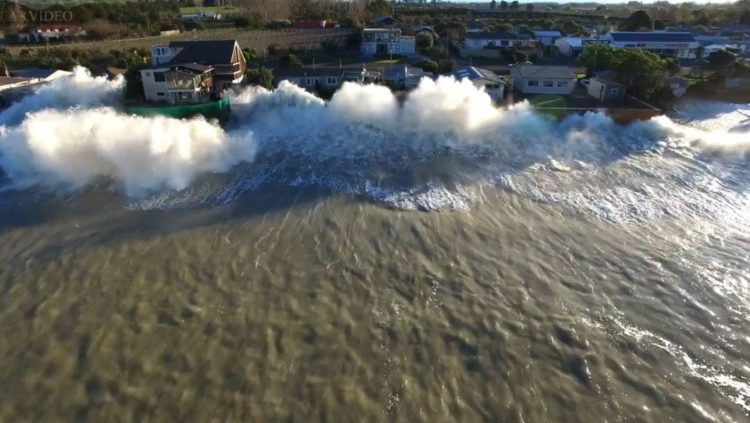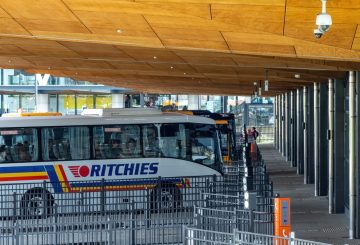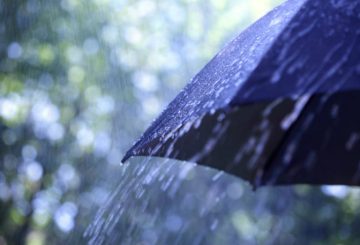Các mối đe dọa ngày càng tăng của biến đổi khí hậu, chẳng hạn như bão gia tăng, cháy rừng và mực nước biển dâng cao, đã châm ngòi cho một cuộc tranh luận ở New Zealand liên quan đến việc rút lui được quản lý của các cộng đồng có nguy cơ thiên tai cao. Dưới đây là tổng quan ngắn gọn về lập trường của các đảng chính trị lớn:
- Bữa tiệc xanh:
- Hỗ trợ pháp luật cho việc rút lui được quản lý.
- Tin tưởng vào việc Chính phủ, hội đồng và chủ nhà chịu chi phí chung cho các gia đình cần di chuyển từ các khu vực có nguy cơ cao.
- Những người ủng hộ việc hạn chế sự phát triển trong các khu vực dễ bị nguy hiểm và đảm bảo rằng các báo cáo LIM của hội đồng bao gồm các cảnh báo nguy hiểm cho những người mua nhà tiềm năng.
- phản đối bảo hiểm trợ cấp của chính phủ.
- Đảng Lao động:
- Hỗ trợ một hành động rút lui được quản lý.
- Không nêu rõ trách nhiệm thanh toán hoặc hạn chế đối với sự phát triển có rủi ro.
- Đã điều tra một số hình thức bảo hiểm khi các công ty bảo hiểm tư nhân rút lui nhưng không thể hiện rõ lập trường của mình về bảo hiểm được chính phủ trợ cấp.
- Te Pāti Maori:
- Backs quản lý luật rút lui.
- Những người ủng hộ việc chia sẻ chi phí giữa chính quyền trung ương và địa phương và chủ nhà để di dời cộng đồng.
- Hỗ trợ các hạn chế về phát triển trong các khu vực có nguy cơ cao và tin tưởng vào việc thông báo cho người mua nhà về các mối nguy tiềm ẩn.
- Chứng thực bảo hiểm trợ cấp của chính phủ.
- Đã vận động hành lang cho một “quỹ thích ứng dựa trên vốn cổ phần” cho các nạn nhân thảm họa không có bảo hiểm và đề xuất một quỹ cứu trợ Māori Taiao trị giá 1 tỷ đô la để phục hồi sau thiên tai.
- Đảng quốc gia:
- Hỗ trợ một luật rút lui được quản lý.
- Đề xuất trách nhiệm chung giữa Chính phủ, hội đồng và chủ nhà đối với chi phí di dời.
- Những người ủng hộ việc cảnh báo người mua nhà tiềm năng về các khu vực rủi ro và tin tưởng vào việc hạn chế phát triển thêm trong các khu vực được chọn để mua lại Cyclone Gabrielle.
- Phản đối các quy định mới để hạn chế phát triển ở các khu vực có nguy cơ khác và bảo hiểm được chính phủ trợ cấp.
- Đảng hành động:
- Không ủng hộ luật rút lui được quản lý.
- Tin rằng Chính phủ, hội đồng và chủ nhà nên chia sẻ chi phí di dời.
- Hỗ trợ hạn chế phát triển ở các khu vực mà Cyclone Gabrielle mua lại được cung cấp.
- Phán quyết các cảnh báo nguy hiểm cho người mua nhà, hạn chế hơn nữa đối với sự phát triển trong các khu vực có nguy cơ và bảo hiểm được chính phủ trợ cấp.
- Đề xuất bãi bỏ Đạo luật Quản lý Tài nguyên hiện hành để ủng hộ luật phát triển đô thị và môi trường mới.
Vấn đề này vẫn còn gây tranh cãi khi New Zealand phải vật lộn với những thách thức sắp xảy ra của biến đổi khí hậu, buộc quốc gia này phải xem xét các quyết định khó khăn cho
các cộng đồng có nguy cơ.


















































-360x245.jpg)











